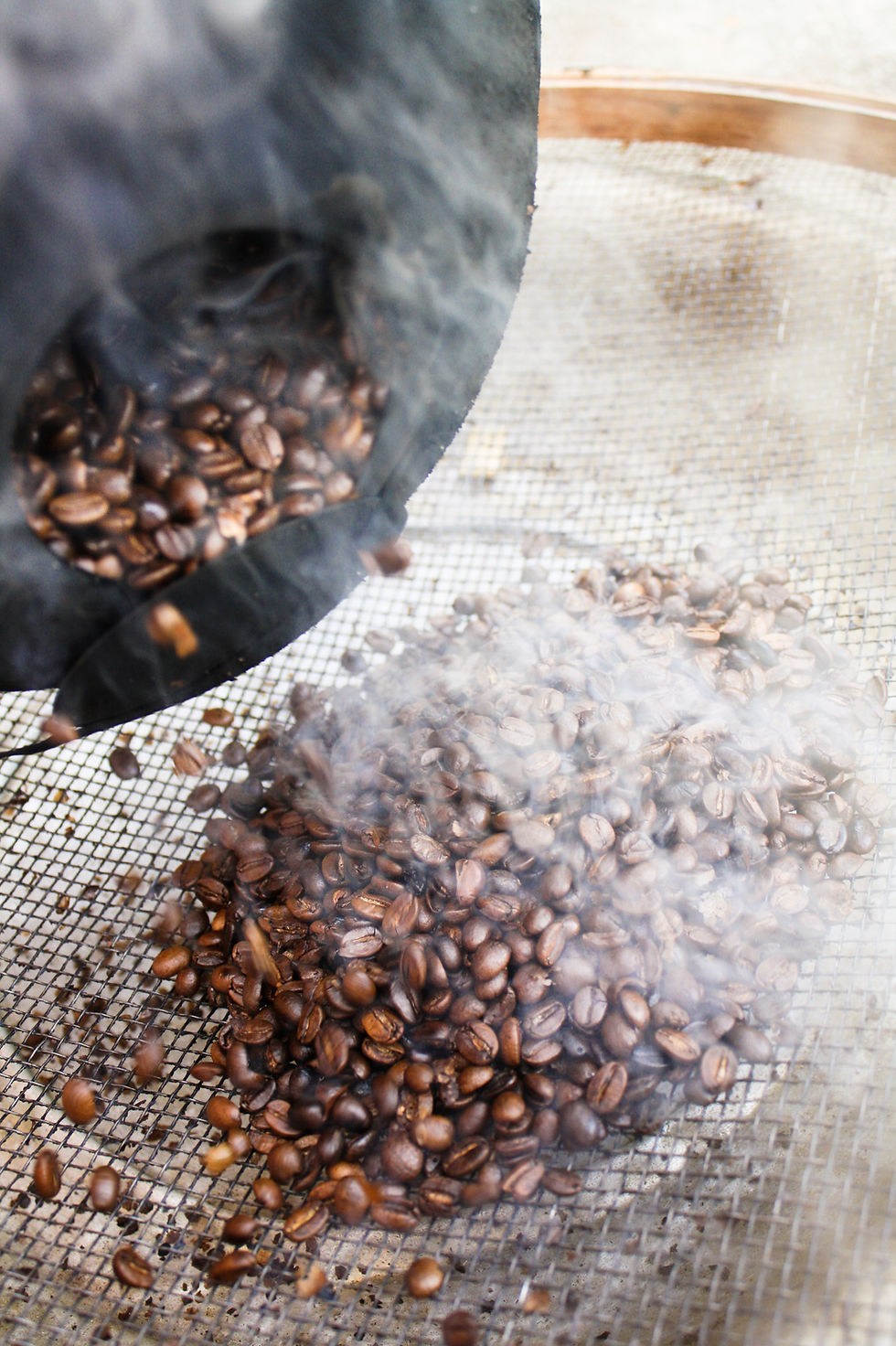Our Coffee Processing Methods
- Cafetos Roaster Co.

- Jun 19, 2022
- 2 min read
Updated: Jul 5, 2022
The flavors of our Sandi specialty coffee can be complex and it can be strong without harshness or bitterness.

Coffee processing refers to the way that a seed is removed from a coffee cherry. Like any other pitted fruit, coffee cherries have a seed, the pulp, the mucilage around the seed, and a protective skin. There are various methods to remove the seed from that cherry, and these methods affect the seed's flavor as it gets roasted and turned into a coffee bean.

Natural Process [Costumers Favorite]
Dry processed coffees are dried in the full cherry prior to de-pulping. Throughout the course of 3-6 weeks, the coffees will ferment, as producers rake these cherries and rotate them to prevent spoiling. Naturals tend to have more fruit and fermented flavors because the bean has more time to interact with the natural sugars from the cherry as enzymes break down the mucilage around the bean.
Sweeter, heavy body with deeper and complex tasting notes
Washed Process [most common in the market]

In this process, the coffee beans are dried without the cherry. Washed coffee’s are de-pulped then usually fermented in tanks full of water to promote the separation of any remaining pectin still stuck to the bean and parchment, then washed clean prior to drying. Washed coffees are prized for their clarity and vibrant notes. Removing all of the cherry prior to drying allows the intrinsic flavors of the bean to shine without
anything holding them back. Fruit notes are still found in washed coffees, however, fermented notes and berry notes are less common.
Cleaner, more crisp tasting notes.
Honey Process [Occasionally available in our shop for a limited time].

Honey processed coffee is a method that involves a combination of both the natural and washed methods.
It is a rare and demanding method, and not as commonly practiced as the previous two. During honey processing, a de-pulper removes the seed from the cherry before it dries out. However, it does not go into a washing tank to get rid of the mucilage. That mucilage, which is what the honey refers to, stays on the seed as it dries in the sun afterwards. The amount of mucilage left behind determines the sweetness, and there are even machines to control the amount on the seed. The seed then finishes out drying on the bed, and also gets raked and rotated to avoid mold.
Richer notes of syrupy sweetness and more pronounced acidity, but more mellow than washed processed coffees.

Double Fermentation Process
A variation of the wash process in which the coffee is fermented a second time to create a more complex flavor.
Anaerobic Process
Oxygen-free fermentation
The coffee is de-pulped and stored with mucilage in sealed plastic tanks for about 24 hours.
Creamier flavor



.png)
.png)
Comments